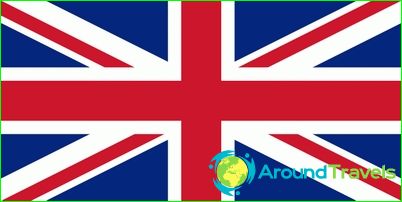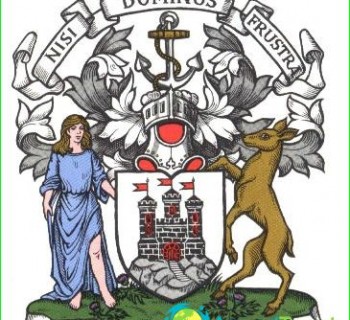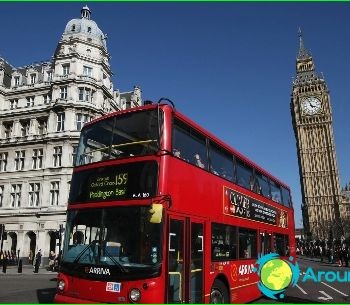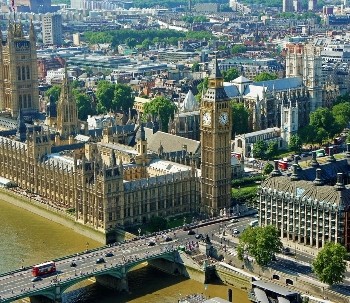Flag of the Great Britain

Great Britain is an island state located in the northwest of Europe. Its shores are washed by the Atlantic Ocean and adjacent seas. The official name of the state is the United Kingdom of Great Britain and Northern Ireland. According to the administrative and political structure, Great Britain is divided into four parts:
1. England with Greater London, six metropolitan counties and 39 counties.
2. Scotland with nine districts of the island.
3. Wales with eight counties.
4. Northern Ireland with 26 counties.
The flag of Great Britain has the appearance of a blue rectangular cloth. The entire panel is crossed by two diagonal stripes in red with a white outline. Above these lines is an even wider red cross with the same white outline. The canvas has an aspect ratio of 1 to 2.
The flag of Great Britain has its own name - "Union Flag", but more often it is called "Union Jack", in the original "Union Jack". There is an opinion that the word "Jack" in the name of the British flag pays tribute to nautical etiquette, because this is how British sailors call the flag raised over warships.
The flag of the Kingdom of Great Britain was officially adopted in 1801. Its task was to become a symbol of the unification of different regions of the state under a single imperial power. The wide cross in the center of the flag is the Cross of St. George. It is he who acts as a symbol of England, because St. George is considered the patron saint of this state. The white oblique cross - this is the Cross of St. Andrew - is the symbol of Scotland. On the Scottish flag, a white cross was placed on a blue cloth. Over time, the color blue turned to blue. The red diagonal cross is the St. Patrick's Cross, symbolizing Ireland. It was placed on top of a white diagonal cross..
For the first time, the flags of Scotland and England appeared in the 13-14 centuries. Interestingly, in 1063, as a result of the unification of the two kingdoms with the formation of the Union flag, on which two crosses were depicted - the red St. George and the white St. Andrew, located on a blue field. However, in 1649, the royal flag was abolished by Oliver Cromwell. It was restored only 11 years later with the monarchy.
Also interesting is the fact that "Union Jack", like a naval flag, by order of James Charles I, was forbidden to be raised on civil ships in Great Britain. The permit concerned only ships of the navy. Violation of the ban was followed by criminal punishment.
The flag of Great Britain received its present form after the annexation of Ireland in 1801. Therefore, the red cross of St.Patrick was added to the image of the flag..


